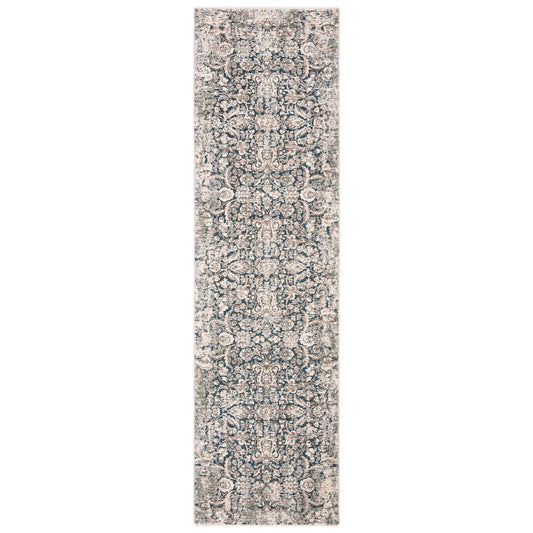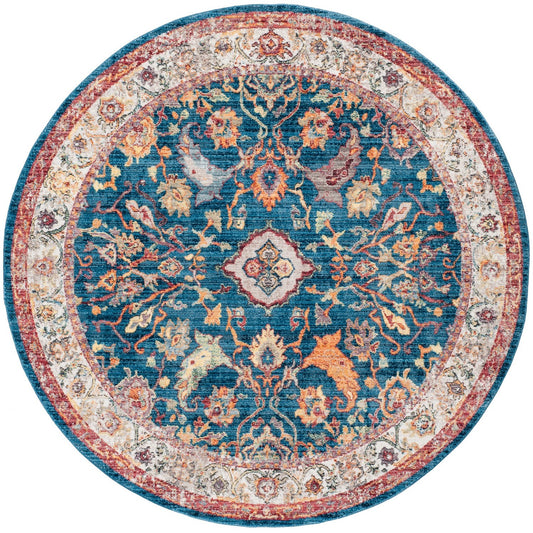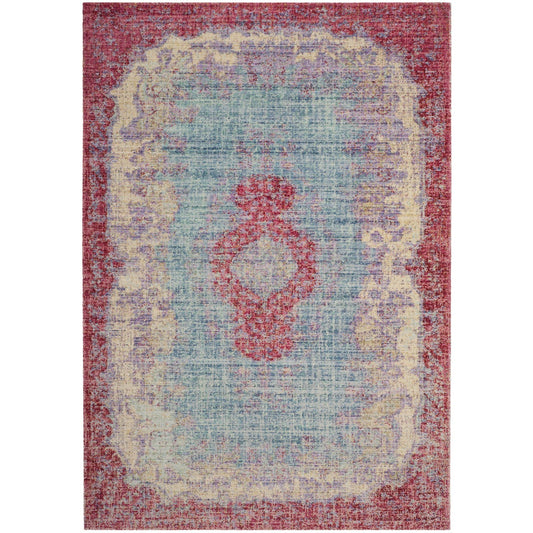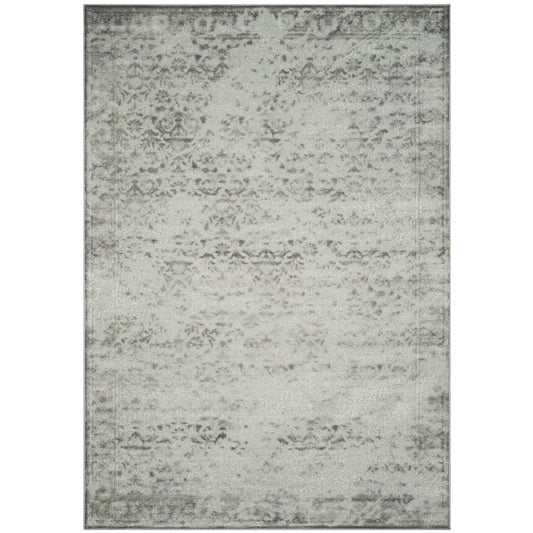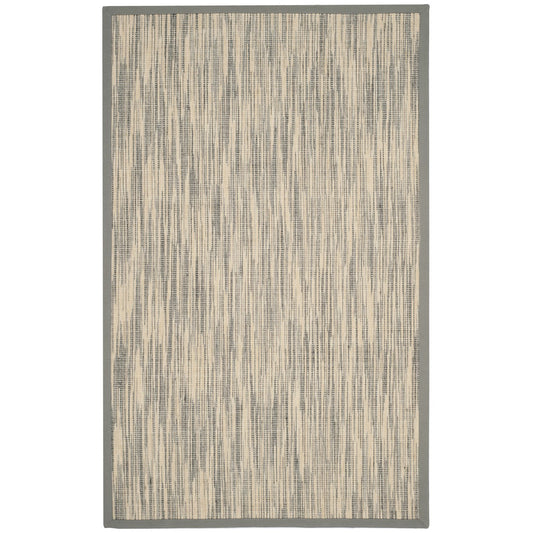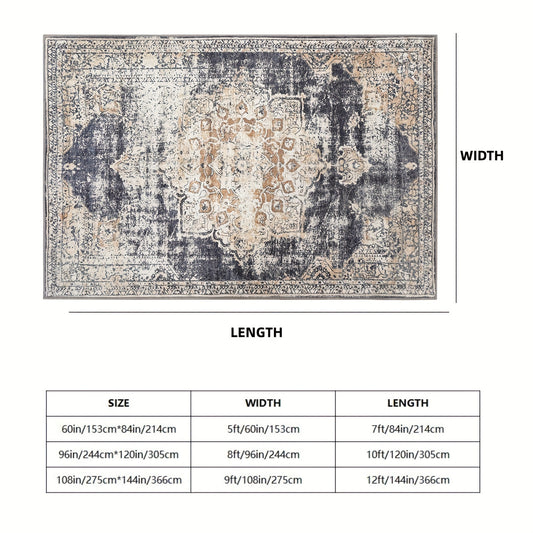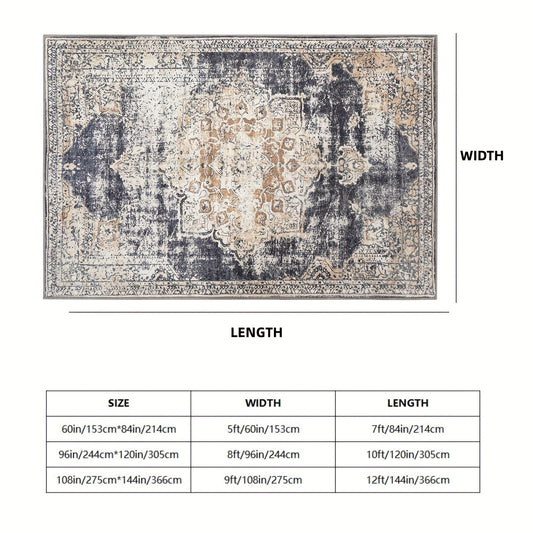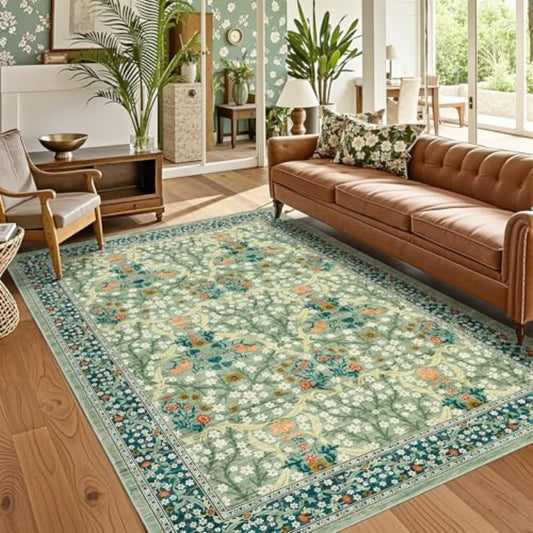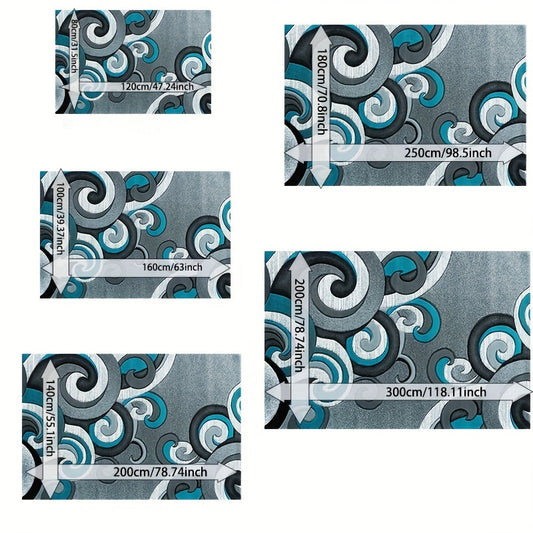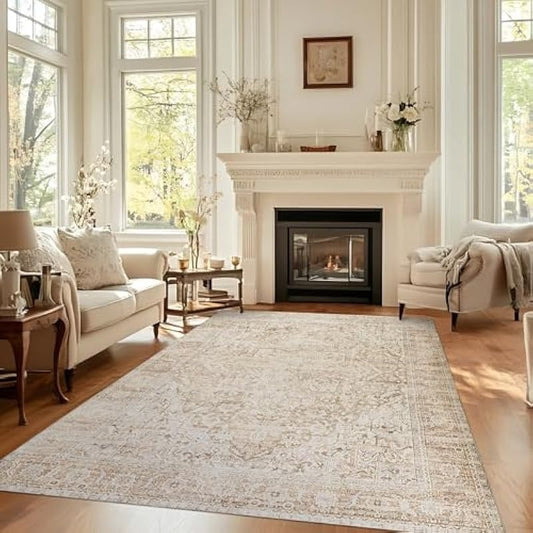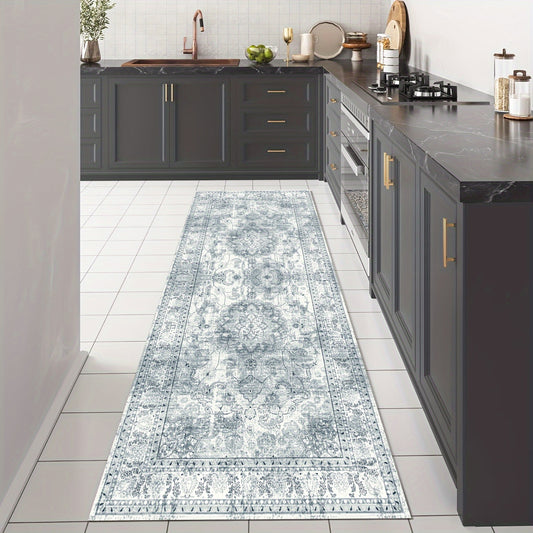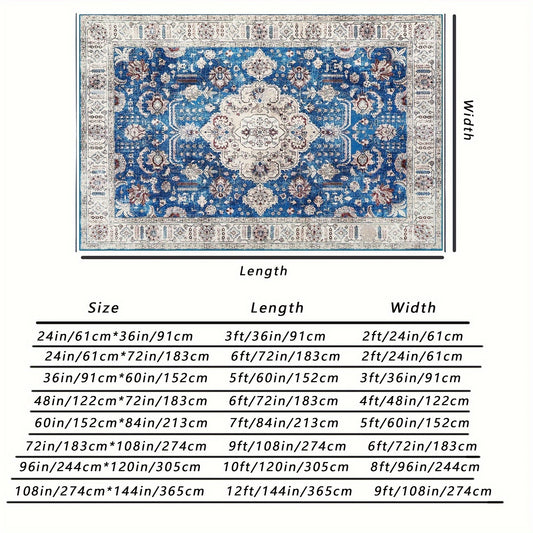About Dining Room Rugs
Introduction To Dining Room Rugs
Dining room rugs are more than decorative elements; they are the foundation upon which elegance, comfort, and functionality come together in one of the most frequently used spaces of a home. The dining room is often a place where family and friends gather for meals, celebrations, and daily conversations, making it essential to have a setting that feels warm, inviting, and stylish. A well-chosen rug ties the room together, softens noise, protects flooring, and adds a layer of design sophistication. Selecting the perfect rug for a dining room requires careful consideration of size, material, durability, and style to balance both practicality and beauty.
The Purpose Of Dining Room Rugs
The primary purpose of a dining room rug is to create a defined and harmonious space around the dining table. A rug under the table not only frames the furniture arrangement but also anchors the entire dining area visually, giving it structure. Functionally, rugs protect flooring from scratches, spills, and chair movement. They also add warmth and comfort underfoot, particularly in homes with tile or hardwood floors, where the acoustics may otherwise feel cold and echo-prone.
The Role Of Size And Proportion
One of the most important aspects of selecting a dining room rug is choosing the correct size. The rug should be large enough to accommodate the dining table and all chairs, even when pulled out. Ideally, there should be 20–30 inches of rug extending beyond the table edges to ensure chairs rest comfortably on the rug surface when in use. A rug that is too small can make the dining area appear cramped and unbalanced, while a rug that is overly large may overwhelm the space. Proportion creates visual harmony, ensuring that the rug enhances rather than detracts from the overall design.
Materials Commonly Used In Dining Room Rugs
Dining room rugs must strike a balance between luxury and durability, as they are often exposed to food spills, drinks, and high traffic. Popular materials include wool, cotton, polypropylene, polyester, nylon, jute, and sisal. Wool rugs provide warmth, natural stain resistance, and long-lasting resilience, making them a premium choice. Cotton rugs are softer and lighter but may require more frequent cleaning. Synthetic fibers like polypropylene and polyester are particularly practical, offering excellent stain resistance and easy maintenance at an affordable price. Jute and sisal lend natural texture and organic appeal, though they may be less forgiving to spills.
Wool Dining Room Rugs
Wool remains the gold standard for dining room rugs due to its natural resilience, softness, and longevity. A wool rug offers excellent insulation, comfort, and resistance to crushing, even under heavy dining furniture. Its fibers are naturally stain-resistant and repel dirt, making it easier to maintain. High-quality wool rugs can last decades, maintaining their beauty and structure, which makes them a wise long-term investment for elegant dining spaces.
Synthetic Dining Room Rugs
Polypropylene, polyester, and nylon rugs dominate the dining rug market because of their affordability and practicality. These rugs are designed to resist stains, moisture, and fading, making them highly suitable for homes with children or frequent entertaining. They are easy to clean, often machine-washable or simple to spot-clean, and available in a wide variety of colors and patterns. While they may lack the luxury feel of natural fibers, synthetic rugs deliver unmatched convenience and durability for everyday dining use.
Cotton Dining Room Rugs
Cotton rugs are valued for their softness, lightweight structure, and versatility. They can easily be moved, washed, or rotated, making them a great option for casual dining spaces. However, cotton rugs are more prone to wear and staining compared to wool or synthetic options, making them better suited for homes where spills are less frequent or where easy maintenance takes priority over long-term durability.
Natural Fiber Dining Room Rugs
Natural fibers such as jute and sisal add earthy character and textural richness to dining rooms. Their neutral tones and woven structures blend seamlessly with wood furniture and minimalist interiors. However, these rugs absorb moisture and may stain easily, requiring careful placement and more attentive upkeep. For homes that emphasize eco-friendliness and rustic charm, jute and sisal rugs provide a sustainable and visually appealing option.
Importance Of Easy Maintenance
Since dining rooms are prone to spills, easy maintenance is crucial. Rugs with low pile or flatweave designs are ideal, as crumbs and dirt do not become deeply embedded. Rugs with stain-resistant treatments or washable materials offer added practicality. Vacuuming regularly, cleaning spills immediately, and rotating the rug seasonally help maintain its appearance and longevity. The easier a rug is to clean, the more stress-free the dining experience becomes.
Dining Room Rugs And Noise Reduction
Hard flooring surfaces such as tile, hardwood, or laminate often amplify sound in dining rooms. A rug softens acoustics by absorbing noise, reducing echoes, and creating a quieter, more pleasant dining environment. This makes conversations clearer and more comfortable during gatherings, adding another functional benefit to having a rug beneath the dining table.
Color Psychology In Dining Room Rugs
The color of a dining room rug influences the atmosphere of the space. Warm tones such as red, orange, or gold stimulate appetite and encourage lively conversation, making them classic choices for dining areas. Neutral shades like beige, cream, and gray provide elegance and versatility, blending easily with existing décor. Blue and green create calming effects, suitable for serene dining experiences. Bold patterns or contrasting colors add drama, making the dining area a statement zone.
Patterns And Design Options
Dining room rugs come in a wide array of designs to complement different interior themes. Geometric patterns lend modernity and sharpness to contemporary spaces. Traditional Persian or Oriental designs bring timeless elegance. Striped patterns elongate the room visually, while floral motifs add natural charm. Abstract and artistic designs create a modern gallery-like feel. Selecting a pattern that resonates with the furniture and wall colors ensures visual balance.
Rugs For Round Dining Tables
Round tables pair best with round rugs, as the symmetry creates balance and cohesion. The rug should extend far enough beyond the table to accommodate pulled-out chairs. A round rug under a round table accentuates the circular form, making the dining area feel harmonious and complete.
Rugs For Rectangular Dining Tables
Rectangular rugs naturally suit rectangular dining tables. Their elongated shape complements the table’s proportions and defines the dining area effectively. A rectangular rug should be long enough to extend on all sides, ensuring chairs rest fully on the rug surface. This alignment reinforces symmetry and creates an organized aesthetic.
Rugs For Square Dining Tables
Square dining tables are best paired with square rugs, as the similar dimensions highlight geometry and balance. For smaller dining rooms, a square rug defines the space without overwhelming it, making it ideal for intimate dining settings.
Dining Room Rugs For Open-Concept Spaces
In open-concept homes, rugs are essential for defining the dining area within a larger living-dining-kitchen layout. A dining rug establishes a clear visual boundary around the table, separating it from adjacent spaces while maintaining flow. This zoning effect is crucial in modern layouts where rooms are interconnected.
Seasonal Adaptability Of Dining Room Rugs
Some homeowners rotate rugs seasonally to refresh the dining room’s look. Lighter cotton or jute rugs feel airy and casual during spring and summer, while wool or darker-toned rugs add warmth and coziness during autumn and winter. Seasonal rug changes keep the space dynamic and adaptable.
Dining Room Rugs And Furniture Coordination
Coordinating a rug with dining furniture enhances cohesion. Dark wood tables pair well with lighter neutral rugs, while light wood furniture benefits from darker rugs that create contrast. Upholstered chairs can be complemented with patterned rugs that pick up their tones. Balance between textures, colors, and materials ensures harmony in the overall design.
How Dining Room Rugs Protect Flooring
Rugs serve as a barrier between dining furniture and flooring. They protect hardwood floors from scratches caused by chair legs, shield tile from cracking under heavy furniture, and prevent spills from causing permanent damage. This protective quality preserves the beauty and longevity of flooring materials.
Dining Room Rugs In Luxury Homes
In luxury interiors, dining rugs often serve as statement pieces. High-end rugs such as hand-knotted Persian, Turkish, or Moroccan styles bring unparalleled artistry. Their intricate patterns and premium fibers elevate the sophistication of formal dining rooms. In such settings, rugs are investments in both beauty and cultural heritage.
Dining Room Rugs In Modern Apartments
For modern apartments where dining areas are compact, rugs provide both functionality and style. A well-chosen rug can make a small dining nook feel larger and more inviting. Flatweave or synthetic rugs are particularly suitable, as they are easy to clean and maintain in urban lifestyles.
Dining Room Rugs In Commercial Settings
Restaurants, cafes, and hotels also incorporate dining rugs for ambiance. In commercial dining spaces, rugs soften acoustics, improve guest comfort, and create a more upscale atmosphere. Durable, stain-resistant materials are essential in these high-traffic environments, ensuring both elegance and practicality.
Historical And Cultural Importance Of Dining Rugs
Rugs have held significance in dining areas for centuries. In Middle Eastern and Asian cultures, rugs symbolized hospitality and wealth, often spread under communal dining settings. Persian and Turkish rugs, for example, were prized heirlooms used during family feasts. In European history, woven tapestries and rugs in dining halls reflected social status and artistic taste. Today’s dining rugs carry forward this tradition of blending utility with cultural symbolism.
Common Mistakes When Choosing Dining Room Rugs
Many homeowners make mistakes when selecting a dining rug. Choosing a rug that is too small is the most frequent error, resulting in awkward chair placement. Selecting light-colored rugs without considering stain resistance can lead to high-maintenance upkeep. Overly thick, high-pile rugs are also impractical, as chair legs may catch or wobble. Avoiding these pitfalls ensures the rug enhances rather than hinders the dining experience.
Dining Room Rug Care Tips
To maximize lifespan, rugs should be vacuumed regularly to prevent crumbs from embedding in fibers. Spot cleaning immediately after spills prevents stains from setting. Using chair leg protectors and rug pads reduces wear. Professional cleaning once every 1–2 years preserves vibrancy, particularly for wool rugs. Following these steps keeps the rug in excellent condition for long-term enjoyment.
Buying Guide For Dining Room Rugs
When purchasing a dining rug, several factors should guide the decision. Size must always allow for chairs to slide comfortably. Material should balance elegance with durability, depending on lifestyle needs. Patterns and colors should align with existing décor. Stain resistance, cleaning ease, and longevity should all factor into the investment decision. By considering these aspects, homeowners can select a rug that enhances the dining experience for years.
Dining Room Rugs As Investments
A high-quality dining rug is not just a decorative item but an investment in the home’s comfort and appeal. Premium wool or handwoven rugs can last decades, retaining value as works of art. Even affordable synthetic options provide excellent returns by protecting flooring and elevating daily dining rituals.
Fabulive’s Contribution To Dining Room Rugs
Fabulive offers an extensive selection of dining room rugs that combine elegance with resilience. Their designs range from classic to contemporary, ensuring options for every décor style. By prioritizing quality materials and modern functionality, Fabulive’s dining rugs strike a balance between style, comfort, and practicality. Homeowners can find rugs that withstand daily dining activities while enriching the visual appeal of their interiors.
Conclusion
Dining room rugs are integral to creating refined and functional dining spaces. They protect flooring, absorb sound, enhance comfort, and elevate décor. Whether crafted from wool, cotton, synthetic fibers, or natural materials, the right rug can transform an ordinary dining room into an inviting, elegant centerpiece of the home. By carefully considering size, design, material, and maintenance, homeowners can choose rugs that align with lifestyle and aesthetic goals. With offerings like those from Fabulive, achieving both beauty and functionality in the dining room has never been easier.
Customer Reviews
-
Sarah W., USA: “This rug completely changed our dining space. It feels luxurious and has stood up well to daily use.” ⭐⭐⭐⭐⭐
-
Daniel H., UK: “I like the quality, but I recommend going one size larger than expected for full chair coverage.” ⭐⭐⭐⭐
-
Layla K., UAE: “Beautiful rug with durable fibers. Easy to clean after family meals.” ⭐⭐⭐⭐⭐
-
Sophie M., Australia: “The rug is stylish and practical. It protects my wooden floor from scratches.” ⭐⭐⭐⭐
-
Adrian P., Germany: “The wool rug we bought feels premium and ties the dining set together perfectly.” ⭐⭐⭐⭐⭐
-
Claire B., Canada: “Great design and easy maintenance. Perfect for a busy family dining room.” ⭐⭐⭐⭐⭐
-
Louis R., France: “The rug adds elegance to my apartment’s dining nook. Excellent quality for the price.” ⭐⭐⭐⭐
-
Emily T., USA: “This rug was a wonderful addition to our open-plan living and dining space.” ⭐⭐⭐⭐⭐
-
Omar Z., Qatar: “Very durable and stylish. Guests often ask where we purchased it.” ⭐⭐⭐⭐
-
Hannah L., UK: “The material feels soft yet strong. It has held up beautifully under our heavy table.” ⭐⭐⭐⭐⭐


